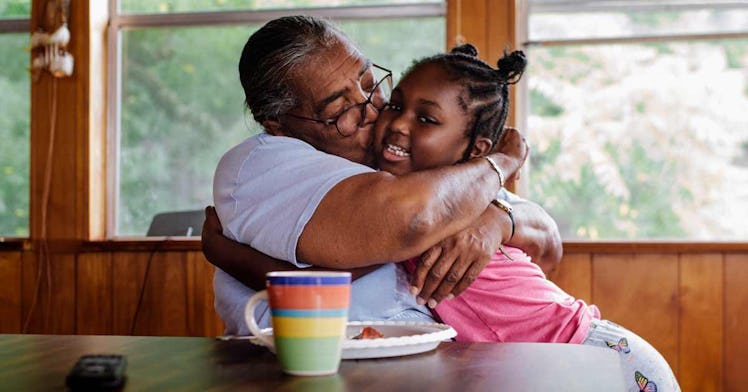A Skeptic’s Guide to the New CDC Guidelines for Vaccinated People
Unmasked kids can go hug their grandparents... Really?

The Centers for Disease Control and Prevention released a much-anticipated guide this past week for what vaccinated adults can and can’t do while limiting the spread of COVID-19. People who are fully vaccinated have much more freedom now than they did over the past year of the pandemic. The CDC guidelines have given vaccinated grandparents the green light to meet with their unvaccinated grandchildren indoors without masks — and hug them. But for parents who have been social distancing, avoiding hugs, and embracing masks for the past 12 months, these new CDC guidelines are enough to give pause. What’s the freaking catch?
Frankly, there isn’t one. The catch is your comfort level. The new CDC guidelines, like the vaccine, aren’t designed to completely eliminate your risk of catching, spreading, or getting sick with COVID-19. You will never be at zero risk until COVID-19 is eradicated… which probably won’t happen, ever. We all have to get comfortable with balancing acceptable risks and precautions. And according to the CDC guidelines, seeing vaccinated grandparents makes the cut.
We’re rushing this, right? How long after the final dose are vaccinated people safe?
Just two weeks.
When vaccinated people get together, they should still wear a mask, right?
Nope. Vaccinated individuals can gather indoors without masks or social distancing, according to CDC guidelines. Just keep your group size small.
What about unvaccinated people? Can we really go see our happily-vaccinated friends and family?
The CDC says yes, if the unvaccinated people are young and healthy. Vaccinated folks may visit unvaccinated individuals from one household indoors without masks or social distancing, so long as none of the unvaccinated people in that household are at high risk for severe COVID-19.
And if there’s more than one unvaccinated person… put the brakes on it?
Exactly. Wear a mask and social distance if more than one household containing an unvaccinated person shows up. The same precautions apply to vaccinated visits to an unvaccinated person who is at high risk for severe COVID-19 or who lives with someone at high risk.
What about people who say they’re vaccinated but aren’t? That’s totally going to be a thing.
This is likely why the CDC still does not recommend attending any medium or large gatherings, no matter what. But if you really can’t trust someone, maybe don’t hang out with them during a pandemic.
And in public, I keep up the masked distancing, right?
Precisely. The CDC guidelines recommend continuing to wear masks and social distance when in public.
So about the kids… they’re obviously unvaccinated. Can they really hug the grandparents?
Yup. “Fully vaccinated grandparents can visit indoors with their unvaccinated healthy daughter and her healthy children without wearing masks or physical distancing, provided none of the unvaccinated family members are at risk of severe COVID-19,” according to the CDC guidelines.
Seriously, though, what’s the catch?
Seriously, there isn’t one. Vaccinated folks have a very low risk of getting sick with COVID-19. Unvaccinated kids and adults can still fall ill, but the risk is relatively low at hangouts with one household of vaccinated family members.
So all risk is on the unvaccinated?
Pretty much. Researchers don’t yet know how likely asymptomatic vaccinated people are to pass on the disease to others. They’re rapidly trying to figure it out and should have an answer soon. With the limited evidence available so far, the risk of a vaccinated person asymptomatically transmitting the virus seems low. “We feel confident that there’s a reduction [in transmission],” University of Florida biostatistician Natalie Dean told the New York Times. “We don’t know the exact magnitude, but it’s not 100 percent.”
This is a CDC guideline and… they haven’t been exactly batting 1000 in the past year. What do others say?
So far, the new CDC guidelines have received high approval from the experts. “CDC totally gets it right,” tweeted Ashish Jha, dean of the Brown University School of Public Health. Some doctors don’t think the CDC guidelines go far enough. “So much evidence now that vaccines reduce transmission from real-world, that think these are overly-cautious, but it’s a start!” tweeted Monica Gandhi, an infectious disease specialist at the University of California, San Francisco Department of Medicine.
This article was originally published on